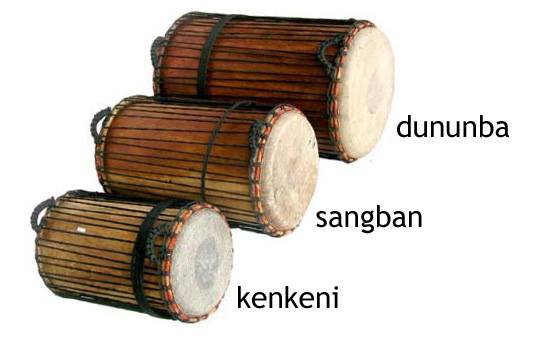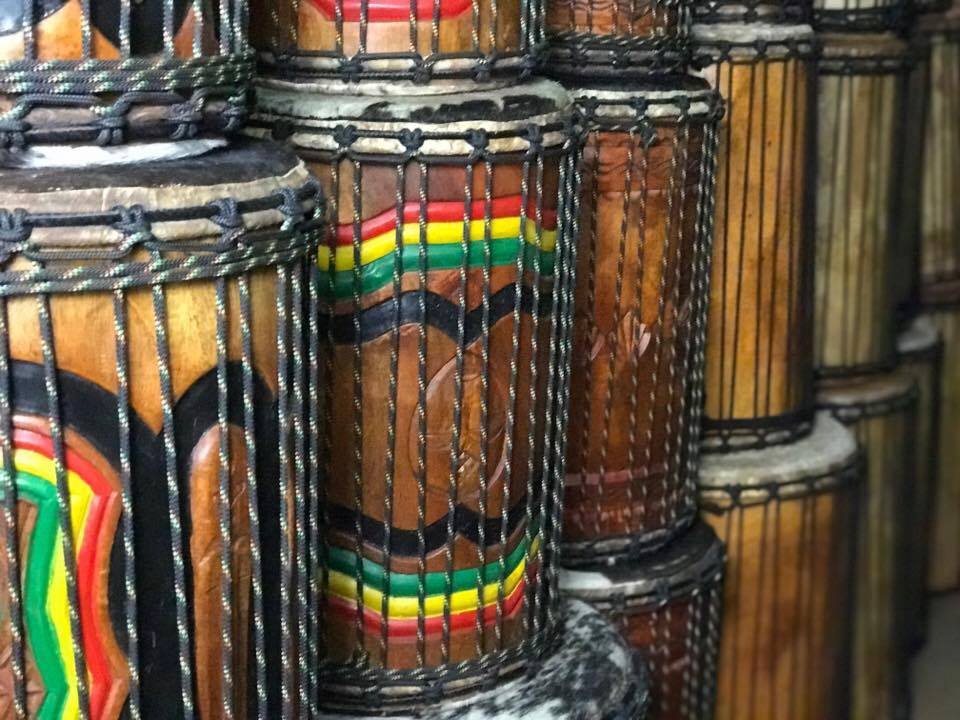What Are Dunun?

The dunun are a set of two or three double-sided barrel shaped drums played with sticks, placed either sideways with one player on each drum, or placed vertically on the ground in what is called ballet style, with one player playing all the parts. Ballet style is commonly used for performances.
When dunun are played in Guinea in the traditional or village style, they are played with a bell attached to the long horizontal end of each drum and struck with a “dinger”, a metal ring or short metal rod. In Mali the bell is held in the air with one hand and hit with a ring on the thumb giving it both an open and closed sound and is called “cloche”, which comes from the French.
The dunun defines the melody and bass line, and functions as the metronome. Although there are some djembe pieces with only one or no dunun, as far as I know, there are no traditional dunun pieces without djembe.
The smallest dunun, and the highest pitched, is called the kenkeni, (konkoni in Mali). It holds time and never changes its part. The mid-sized drum is the sangban, and it carries the melody of the piece. The largest drum is the dununba, which synchronizes with the sangban and accents the whole arrangement. The sangban and dununba can and do have syncopated conversations in which call and response happens.
It’s important to note that the term dununba also refers to a family of rhythms in 6/8, as well as a community gathering or party in which people dance dununba. Legend has it that the dununba was a place or event where a community or rival village hashed out problems by having two individuals dance it out.
This content is locked.
This content is available with the monthly Student subscription.

